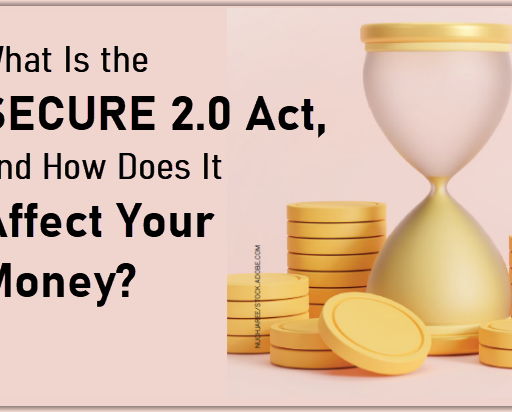Money Matters
The recent signing of the SECURE 2.0 Act into law has several provisions that may impact your retirement savings.
SECURE 2.0, the sequel to the Setting Every Community Up for Retirement Enhancement (SECURE) Act of 2019, offers more options for people, including near retirees and those with student loan debt, to save more for their retirement.
Rarely does legislation get a follow-up – much less one that benefits whole swaths of Americans. But that’s the case with the SECURE 2.0 Act of 2022, passed by Congress on Dec. 23, 2022, and signed by President Joe Biden on Dec. 29, 2022.
Principal® Financial Group has been busy reviewing this legislation and here’s what we have learned.
The Background on SECURE 2.0
SECURE 2.0 is the successor to the Setting Every Community Up for Retirement Enhancement Act – sometimes referred to as SECURE 1.0 – which was enacted in 2019. That law focused on widening access to tax-advantaged accounts, among other impacts on retirement planning.
Almost as soon as SECURE 1.0 was passed, Congress began work on SECURE 2.0 – but it’s been stuck in legislative limbo. The House passed a version in March 2022, while the Senate tried to align its own changes for the rest of the year. They finally came to a consensus in 2022 with just days to spare.
How SECURE 2.0 Affects You and Your Retirement Savings
By including provisions for so many different people, SECURE 2.0 acknowledges the obvious: Retirement savings affect everyone – young and old, people with plans and those without.
“SECURE 2.0 does have a number of practical ways for more Americans to build retirement savings,” says Heather Winston, director of individual solutions for Principal®. Here are a few to understand.
Catch-up Contributions
People aged 60 to 63 can already make a catch-up contribution to their retirement accounts, but SECURE 2.0 ups the total by quite a lot: $10,000 to a 401(k) or 403(b), or $5,000 to an IRA in 2025. Existing catch-up contributions remain the same for those aged 50 to 59. In addition, starting in 2024, individuals above a minimum income level – currently $145,000 – will be required to make those catch-up contributions as post-tax or Roth IRA contributions. But that also means when that money is withdrawn to use in retirement, it’s not taxed.
Required Minimum Distributions
SECURE 1.0 boosted the required minimum distribution (RMD) age to 72. SECURE 2.0 ups it again – first to 73, then to 75, depending on your birth date. The new legislation also reduces the penalty, currently 50%, for failing to take an RMD down to 25%.
“These changes could be welcome news for retirees who may find that their RMD could put them in a higher tax bracket than they initially planned for,” Winston says.
Auto-enrollment in Employer-sponsored Retirement Plans
SECURE 2.0 has a number of features addressing automatic enrollment and increased deferrals into employer-sponsored retirement plans. Beginning in 2025, most employers starting a new plan must auto-enroll everyone at a rate between 3% to 10%. Then, the employer must increase that enrollment percentage each year until employees reach at least a 10% but not more than a 15% contribution rate. Employees can choose to opt out of this.
This rule does not apply to companies with 10 or fewer employees, those that have been in business for less than three years or that have existing plans, Savings Incentive Match Plan for Employees (SIMPLE), church plans or governmental plans.
Emergency Savings
One out of four people lacks emergency savings. A unique provision of SECURE 2.0 attempts to remedy that. It allows employers to offer emergency savings accounts alongside employer-sponsored retirement plans. Those emergency savings would be capped at $2,500 – employers may set lower limits and may limit withdrawals to one per month – with extra funds going to an employer-sponsored retirement account. Employers who provide matching contributions for employer-sponsored retirement plans are now also required to match employee emergency savings accounts at the same rate.
529 Rollovers to Roth IRAs
If you have a 529 in your name but don’t need some of those savings to pay education-related expenses, SECURE 2.0 allows you to roll over up to a lifetime limit of $35,000 to a Roth IRA. The 529 must be at least 15 years old, and contribution limits would still apply.
Student Loan Debt Payments
Employers that choose to use the student loan provision of SECURE 2.0 may find themselves with a key recruit-retain advantage. They can make retirement plan-matching contributions on behalf of employees who are paying off student loans. The thought is that those individuals may not be able to afford to save for retirement and are missing out on key saving years and time in the market.
Part-time Work and Retirement Savings
Some savings plans aren’t available to those who work part-time, but SECURE 2.0 makes anyone who works between 500 and 999 hours each year for two consecutive years eligible to enroll.
More SECURE 2.0 Provisions
It’s a long list, and there’s even more that may affect you, including additional options for minimum rollovers, donations to charities from retirement plans and a national clearinghouse for those who may have lost track of retirement savings they once had.
Want to learn more? Please contact Mary Ellen Fiflis, FSCP, with Principal® to discuss. Email: fiflis.maryellen@principal.com, phone: (630) 874-6748.
Insurance products issued by Principal National Life Insurance Co. (except in NY), Principal Life Insurance Co., and the companies available through the Preferred Product Network, Inc. Securities and advisory products offered through Principal Securities, Inc., (888) 774-6267, Member SIPC. Principal National, Principal Life, the Preferred Product Network and Principal Securities are members of the Principal Financial Group®, Des Moines, IA 50392. Mary Ellen Fiflis, Principal National and Principal Life Financial Representative, Principal Securities Registered Representative, Financial Advisor. 2698615-012023




